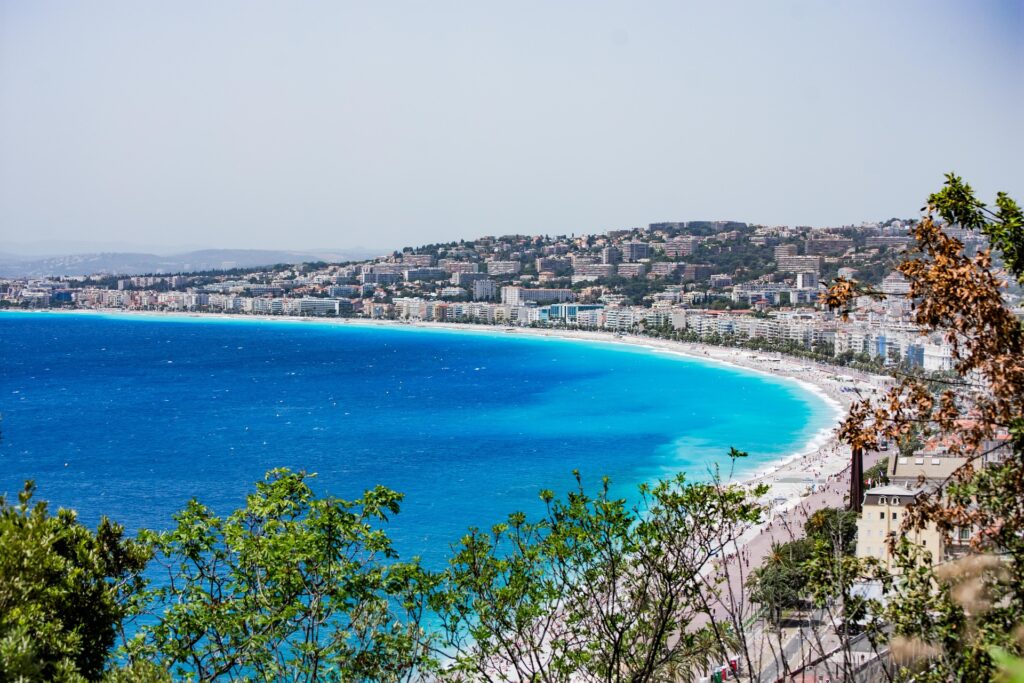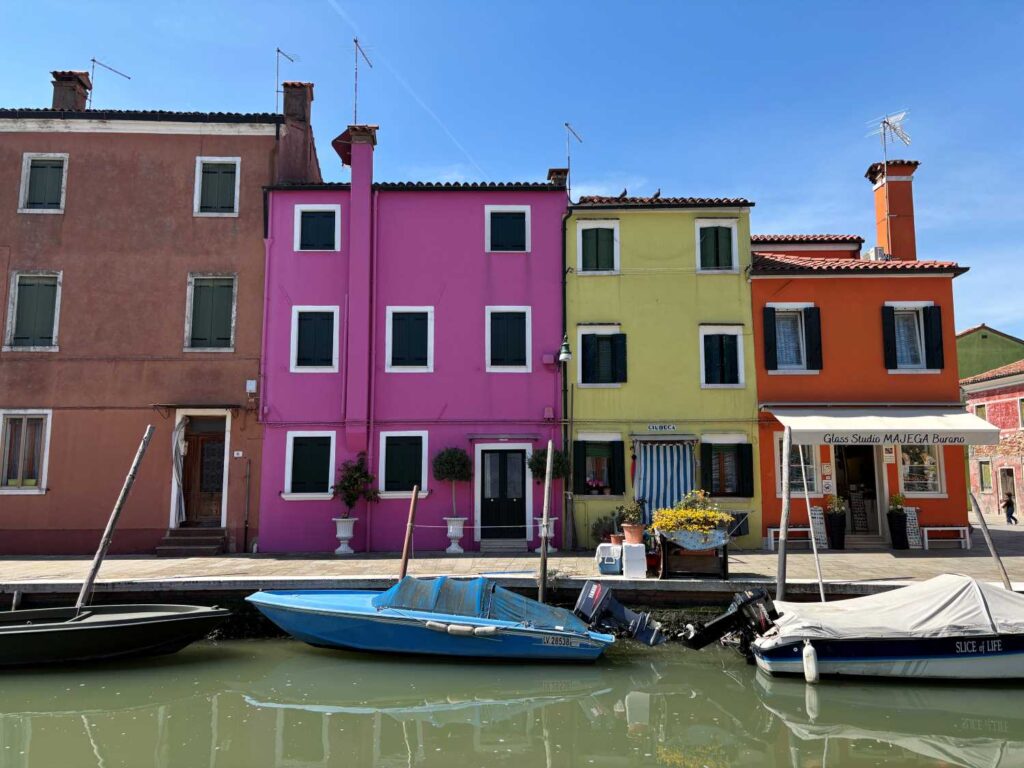Welcome to the captivating ruins of Pompeii, a UNESCO World Heritage Site, and an extraordinary journey back in time. For families with kids, Pompeii offers a unique opportunity to immerse themselves in the ancient world and uncover the mysteries of a once-thriving Roman city.
Pompeii, a bustling Roman city near modern-day Naples, was tragically buried under volcanic ash and debris during the catastrophic eruption of Mount Vesuvius in AD 79. Pompeii was hidden beneath the earth for almost two millennia, preserving its ancient streets, houses, temples, and public spaces until its rediscovery in the 18th century.
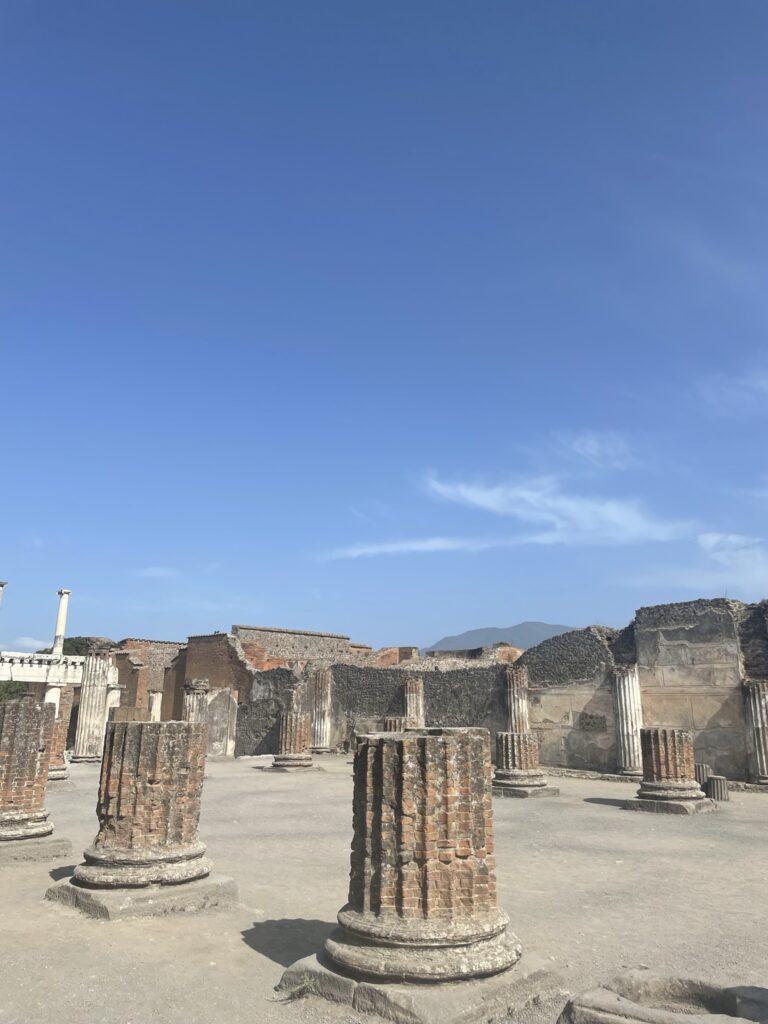
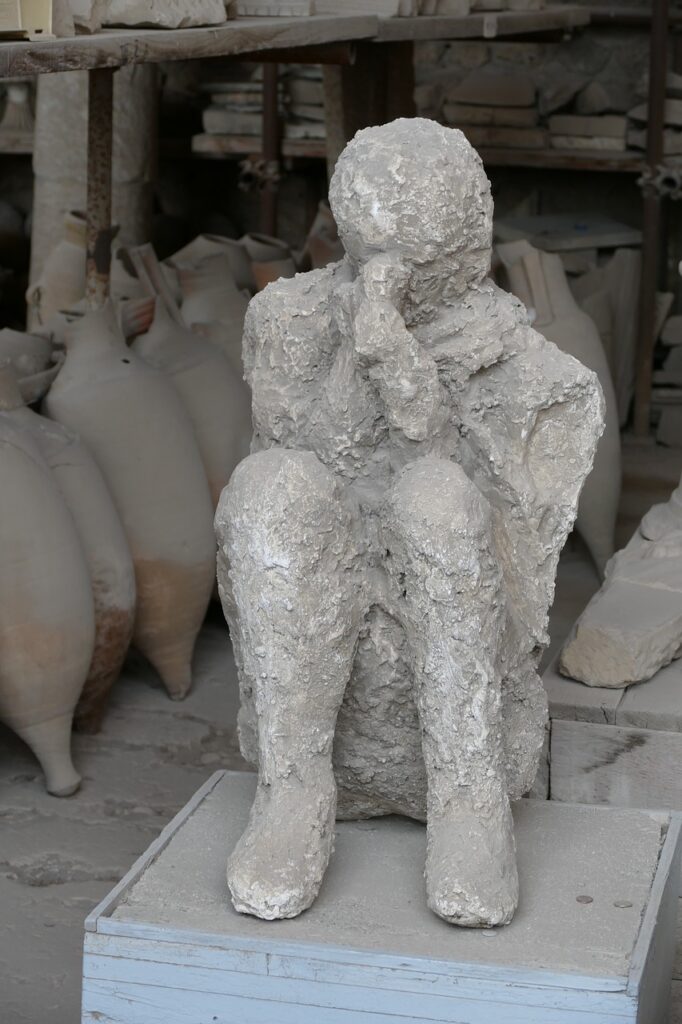
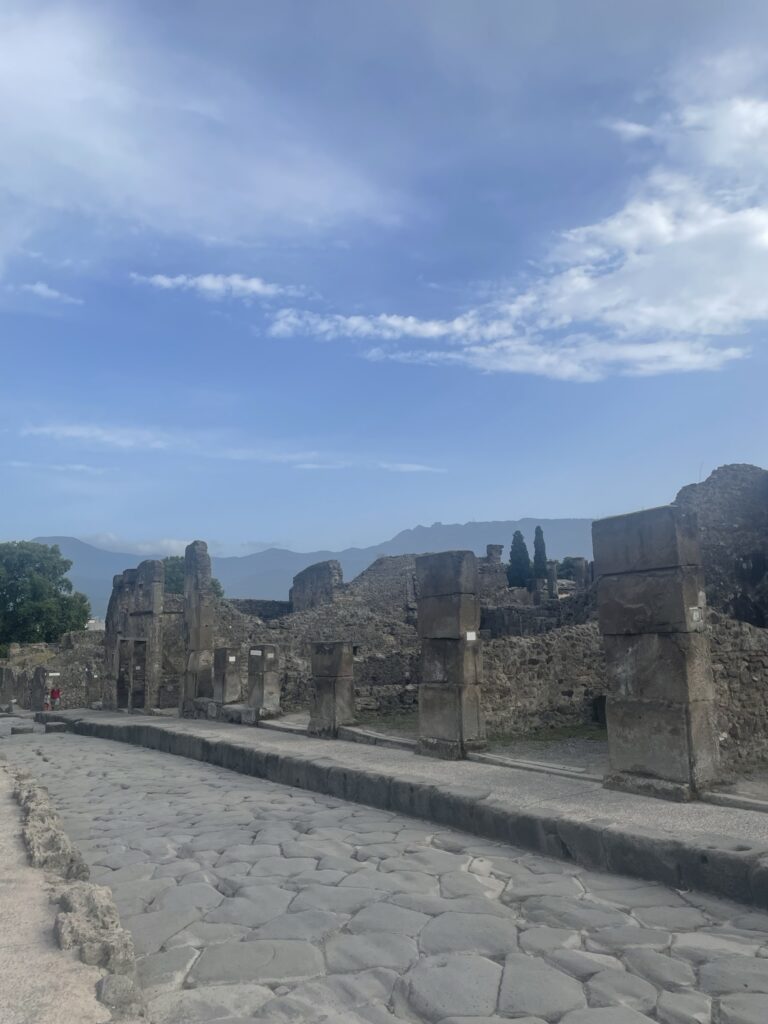
What happened in Pompeii?
In AD 79, Pompeii was a bustling Roman city located on the Bay of Naples in southern Italy. It was a prosperous centre of trade, known for its beautiful architecture, well-planned streets, and vibrant cultural life. However, the city was also close to Mount Vesuvius, an active volcano.
On August 24th of that year, Mount Vesuvius erupted with unimaginable force. The volcano sent a colossal plume of ash, pumice, and hot volcanic gases soaring into the sky. The eruption created a cloud of debris that rapidly spread, blotting out the sun and turning day into night.
The intense heat and falling volcanic material buried Pompeii and the surrounding areas under several meters of ash and pumice, trapping the city and its inhabitants. The pyroclastic flow, a deadly mix of superheated gas and ash, swept down the slopes of Vesuvius and engulfed everything in its path.
The volcanic eruption took the lives of an estimated 2,000 to 2,500 people. It was a catastrophic event, devastating the region and its population.
Pompeii remained hidden and forgotten for centuries until its rediscovery in the 18th century. Excavations began, revealing an incredibly well-preserved snapshot of ancient Roman life frozen in time. Archaeologists uncovered streets, buildings, and even victims’ bodies preserved in volcanic ash.
Today, Pompeii stands as one of the most significant archaeological sites in the world. Visitors can walk through the ancient streets, explore well-preserved houses, temples, and public buildings, and witness the artistic and cultural achievements of the ancient Romans.


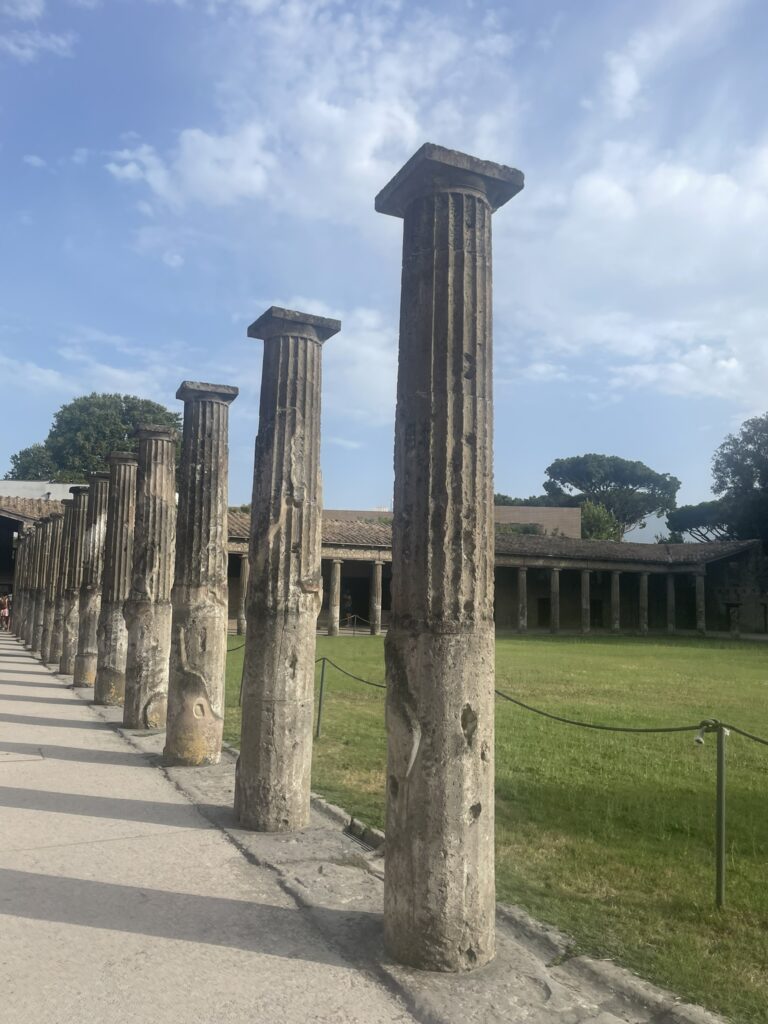
Opening times and tickets
Pompeii is open from April 1st to October 31st, from 9 am to 7 pm (with the last entrance at 5.30 pm) and from November 1st to March 31st, from 9 am to 5 pm (with the last entry at 3.30 pm).
For your visit to Pompeii, you can either book tickets online through the official ticket supplier TicketOne or go to the ticket offices at Porta Marina, Piazza Anfiteatro and Piazza Esedra. Each ticket costs 19 euros and entrance is free for those under the age of 18.
Buying your tickets in advance is a good idea to avoid queues during the busy summer period, especially when travelling with children.
How to get to Pompeii
Pompeii is located in the Campania region of southern Italy, near the city of Naples. Here is how you can get to Pompeii:
- By Plane: If you are coming from abroad or a distant location, you can fly into Naples International Airport (NAP). From the airport, you can take a taxi, shuttle, or public transportation to reach Pompeii.
- By Train: If you are already in Italy or Europe, you can take a train to Naples Centrale train station. From there, you can take the Circumvesuviana train line, which connects Naples to Sorrento, and get off at the Pompei Scavi-Villa dei Misteri station. This station is right next to the entrance of the Pompeii archaeological site.
- By Car: If you prefer driving, you can rent a car and follow the A3 motorway, which runs from Naples to Salerno. Take the Pompei Ovest exit, and you will find signs directing you to the Pompeii ruins.
- By Guided Tour: Many tour companies offer guided tours to Pompeii, which often include transportation from nearby cities like Naples or Rome.
If you’re arriving in Naples for your onward trip to the Amalfi Coast, consider stopping at Pompeii for a few hours en route from the Naples airport to your final destination on the Amalfi Coast.
Guided tour is the only way to go
I recommend taking a guided tour of Pompeii with your family. It will bring the city and its history to life and make the experience more memorable. Without the guide’s stories, you will wander (aimlessly) around a town of stones without knowing what is what.
You can ask for a guided tour at the entrance to the site of Pompeii at Piazza Esedra and Porta Marina between 9.00 am and 3.00 pm. However, I recommend you to pre-book your tour in advance during the busy summer months, and you can also skip the queue with your guide.
You can download a free app called MyPompeii to do a self-tour with suggested routes for kids, but you will not need it if you have booked a guided tour which will cover a lot more than the app can offer. It does have a map though to help you orient yourself.
There are few signs or plaques to explain what you’re looking at, so you need a guide to know where you are and what you’re looking at.
After all, Pompeii ruins were once a city, and it’s enormous. Even without kids, you could easily spend a whole day exploring the site. Therefore taking a guided two-hour or three-hour tour (if your kids can stretch it) is the ultimate way to experience Pompeii. The guide will show you many highlights within a shorter time and share historical facts and stories from the past. These bring Pompeii to life, so you can imagine what life was like there for people before the eruption. Only expect to see part of the Pompeii site in two or three hours, even with a private guided tour. The main sights are quite far from each other, and it’s hard to fit it all into half a day.
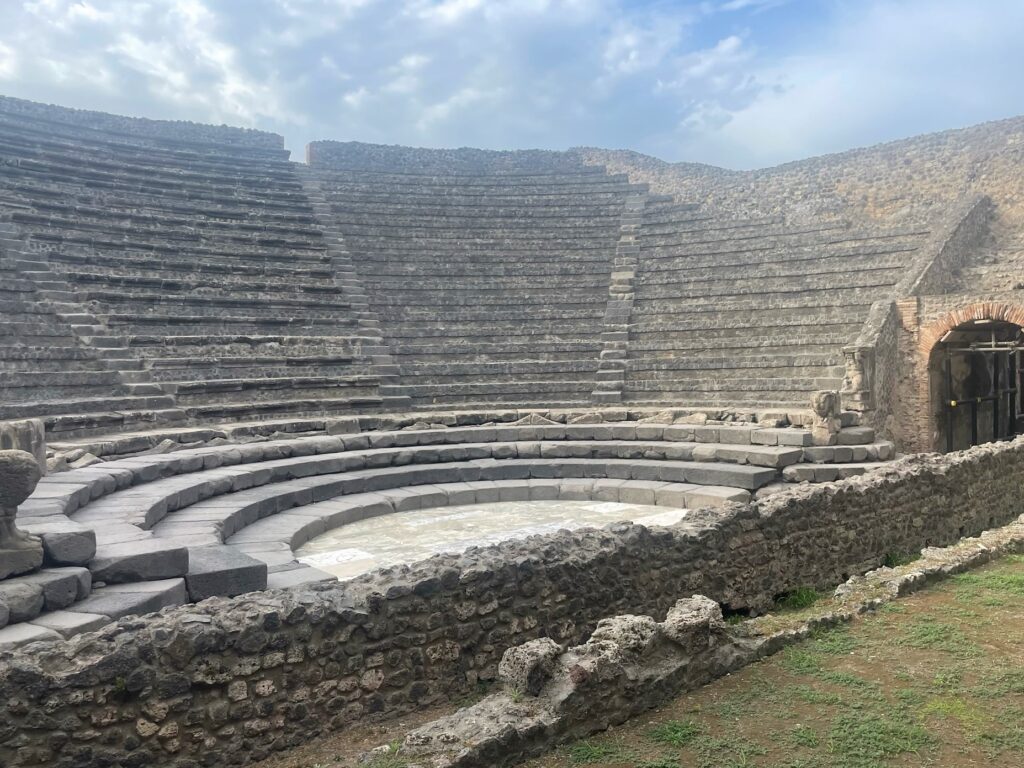
Tips for visiting Pompeii with kids
Don’t bring a stroller
The surfaces are uneven, and cobblestone streets are not suitable for strollers.
Wear flat shoes
Wear comfortable shoes as the roads are uneven and covered with stones. Trainers or walking shoes are best, unless it’s really hot.
Wear sunscreen
It gets very hot in the summer, so keep this in mind when planning when to take your trip to the site. There are few places with shade, so wear protective clothing against the sun, such as a hat, sunglasses and SPF protection.
Bring little with you
Large bags are prohibited on the site, and you want to avoid carrying a heavy load for a few hours. Just bring water and snacks for kids.
Ongoing excavations
Pompeii is an ongoing archaeological site where excavations are still taking place. The ancient city is vast, and due to the layers of volcanic ash preserving many structures, there is still a lot left to discover and explore.
In June 2023, the world was amazed by the discovery of a fresco on the wall of a house in Pompeii showing a Mediterranean feast featuring a piece of round flatbread on a silver tray, along with pomegranates, dates, nuts, and fruits. Some speculated if this could have been the first pizza. However, experts clarified that it is not a pizza because tomatoes and mozzarella, essential ingredients of the classic Neapolitan pizza recipe, were not available in Italy during the first century AD. Instead, the fresco likely depicts a focaccia and not every focaccia becomes pizza…

